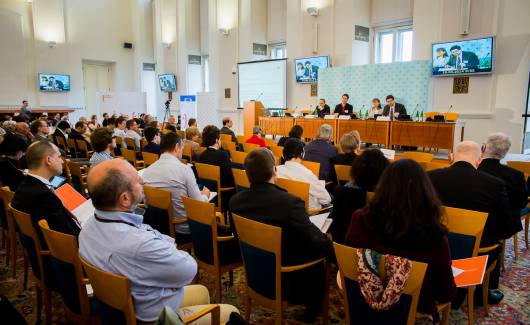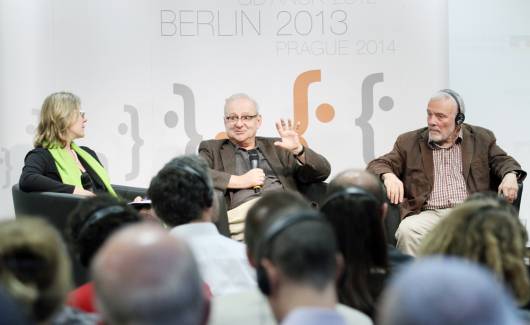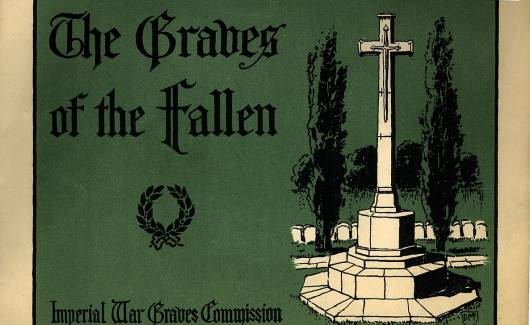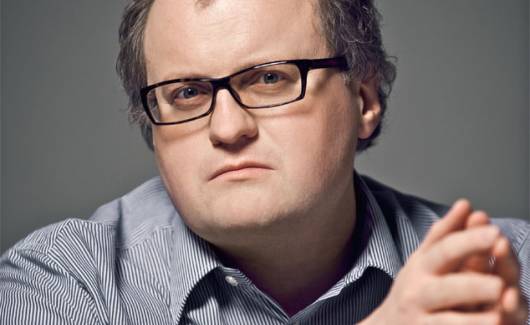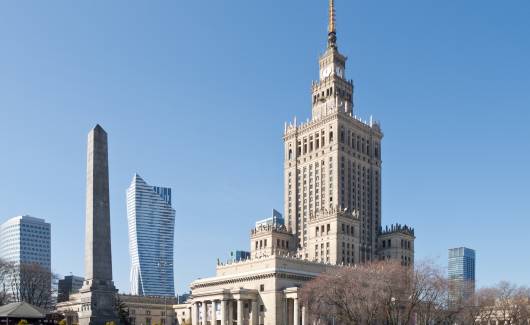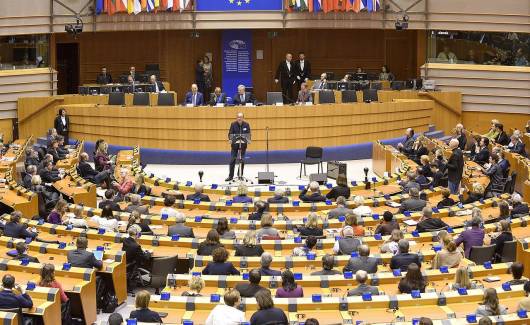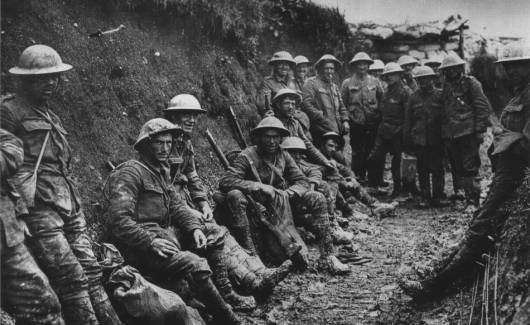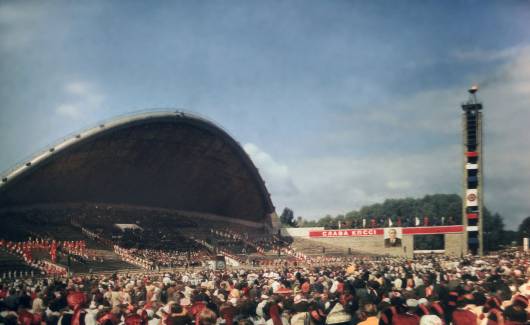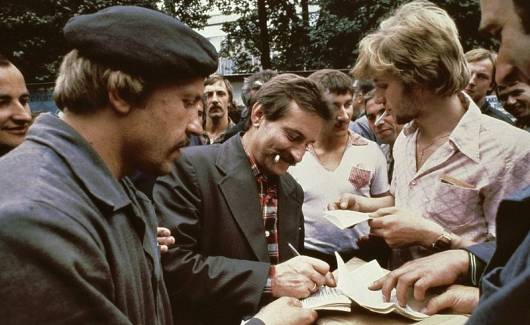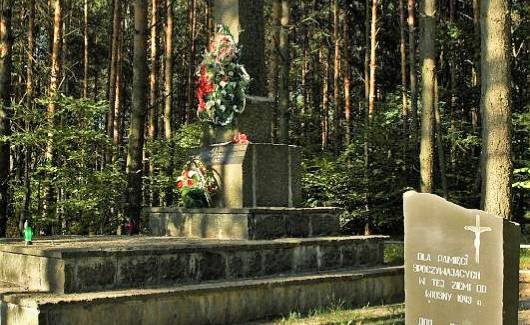ABSTRACT
In this paper Ignác Romsics, drawing on his own book on the regime change in Hungary, succinctly presents this process from five different perspectives. They are: 1) the National Round Table negotiations held from June to September in 1989 as well as the peaceful political transition in the end of 1989 and in 1990 that resulted from the decisions made at these negotiations; 2) foreign policy reorientation from the early 1990s until the accession to the European Union in 2004; 3) the transition to a market economy that began in the late 1980s; 4) the emergence of the ideological-cultural pluralism which replaced the dominance of Marxism in the 1990s; 5) ambivalence about lustration. One of the main aspects in each perspective is the evaluation of the extent and nature of elite change. The author comes to the conclusion that while the political elite was replaced to a large extent, the elite groups of the late Kádárian-era in cultural and economic life have essentially retained their influence and positions until recent times. The author points at a lack of public accountability as one important reason for this situation.
By regime change and its synonyms I mean the process of transition during which the one-party dictatorships created by Soviet pressure in the aftermath of World War II were changed into parliamentary democracies across Eastern Europe based on multi-party systems, as well as the process during which centrally planned economies founded on state ownership were substituted for market economies based on private ownership. Parallel with this transition, qualitative changes were also taking place in various sub-systems of society, such as cultural life. Similar to most major shifts in world history, this transition resulted from the convergence of several external and internal factors, as well as their impact on one another. The key moment in this transition was the realignment of international power relations, namely the end of the Soviet and American rivalry, which had been going on since the end of World War II, with an American victory. Another important factor was the historic defeat of centrally planned economies based on state and public ownership by capitalism that had its foundations in private ownership and the automatism of market mechanisms. The impact of individual initiatives and internal social movements should not be overlooked, either. They contributed to the transition in that they tried to subvert and/or reform the system by way of taking advantage of the opportunities that presented themselves – oftentimes by even creating these opportunities as well. This process started in Hungary during the last third of the 1980s and became irreversible with the free general elections that took place in the spring of 1990. The key event on the path of this transition – revolutionary in its content, but peaceful in its form and outward manifestation – was the socalled National Round Table (NRT) negotiations. The talks started on 13 June 1989 and ended on 18 September of the same year. They were held between the State Party (Hungarian Socialist Workers’ Party, MSZMP) and its satellite organizations, as well as the representatives of the parties and organizations set up by the opposition in 1988 and the beginning of 1989.
* * *
During the opening session of the National Round Table talks the lawyer Imre Kónya, on behalf of the opposition organizations, stated that the aim of the negotiations was to ensure the peaceful transition from the dictatorial system to a representational democracy taking de facto account of the will of the people. “The will of the people” – he added – “should be made manifest in open-ended and free elections, from which no party or political organization is to be excluded as long as they accept the principles of democracy and distance themselves from the application of force.” During the second plenary session on 21 June, Imre Pozsgay, representing the Socialist Workers Party, reacted to this by saying that MSZMP accepts an electoral system based on free elections that expresses the will and intentions of citizens by means of the struggle among the parties.1
At the multi-level talks, discussion was going on simultaneously in various sub-committees with the participation of 1,302 representatives and experts from the three “sides”. According to expectations and preliminary statements of intentions, the parties involved agreed on the process of substituting the one-party dictatorship with a multi-party democracy, as well as on other key issues. The legal framework of the new Republic of Hungary was designed during these talks, which were referred to as “negotiation revolution.”
Of the recommendations of the National Round Table negotiations, decisions concerning the modifications of the Constitution were of the greatest importance. These decisions filled the previous framework of the Constitution with content based on entirely new values, which in many respects resembled the democratic Act I of 1946, adopted prior to the communist takeover. It was agreed upon that instead of a “people’s republic” Hungary would become a “republic” in which the principles of both “bourgeois democracy” and “democratic socialism” would be adhered to. In the new state nobody would have the opportunity for the exclusive exercise of power and no single party could impose its will over the people. The passage about the “leading role of the Marxist-Leninist party of the working class” was deleted and the multi-party system was declared. The new economic system of the country was envisaged as a market economy that would “also take advantage of the benefits of planning” and where “public and private ownership are on equal footing and enjoy equal protection”, an economy that “acknowledges and supports the right of enterprise and the freedom of competition”. It was recommended that the Parliament should function as the chief organ of the state power and the popular representation of the Republic of Hungary, whose members, being professionals and rewarded accordingly, would be elected by the people for a term of four years. Next to jurisdiction, the exclusive competences of Parliament came to include the most important decisions concerning personnel, such as the appointment of government members, as well as the heads of other important state bodies. In case of extraordinary external or internal situations, the Parliament had the power to proclaim martial law, to sign peace treaties, to declare a state of emergency, and to command the armed forces inside and outside the country.2
The parties agreed that the previous multi-member Presidium incorporating the functions of the head of the government would cease to exist and the new position of the President of the Republic would be created instead. A near consensus was reached that the powers of the would-be president – again in the spirit of Act I of 1946 – should be limited.
Act XXXI of 1989, which amended the Constitution of 1949, was the most important of the so-called cardinal laws that were adopted by the communist parliament. As a token of respect for the 1956 revolution and war of independence, the Act went into effect on 23 October, 1989. The republic was declared on Kossuth Square on the very same day by Mátyás Szűrös, communist chairman of parliament, who became the temporary president of the republic. In his speech that thousands were listening to, he referred to several prominent Hungarians as the predecessors of the renascent democracy in Hungary, among them Lajos Kossuth, leader of the 1848 revolution and war of independence; Mihály Károlyi, leader of the democratic revolution of 1918 and president of the republic proclaimed in November 1918; and Zoltán Tildy, president of the so-called second Hungarian Republic, declared in 1946.3 Legally, and to a certain extent in reality as well, the party state and along with it state socialism ceased to exist. After 40 years of a forced detour, Hungary could finally return to the parliamentary system whose foundations had been laid in 1848–49 by the “founding fathers” of the modern parliamentary Hungarian state.
Having ratified the recommendations of the National Round Table talks, after 23 October the old parliament continued with the adoption of the cardinal laws of the new Republic of Hungary. Act XXXII, declared on 30 October, provided for the creation of the Constitutional Court. Such a body had never existed in the life of the Hungarian state. The members of the Constitutional Court were to be elected by parliament for a term of 9 years and the court was granted extensive powers. Its tasks included the the preliminary and follow-up judicial reviews of the acts of parliament, the examinaton of complaints filed for violation of constitutional rights, the interpretation of the constitution, as well as the elimination of conlicts of competence between state bodies and local governments. The Constitutional Court, serving as the main body for the protection of the Constitution and the rule of law, had the right to dispose of acts that were violating the Constitution and to destroy any governmental action in violation of laws. By this, the Constitutional Court became one of the most important bodies of the new system of public institutions and had a crucial role in maintaining the checks and balances in relation to the parlimentary majority and the government. The Constitutional Court started its work on 1 January, 1990. László Sólyom, a professor of law and a former advisor of environmental protection movements, became the President of the Court.4
Act XXXIV on election of the members of parliament also came into force on 30 October. According to this act, parliament was to have a total of 386 members, out of which 176 members were to be elected as individual candidates from their constituencies, 152 members on the basis of regional (counties and the capital) party lists, whereas 58 members on the basis of national party lists. Due to the mixed nature of the election system, each voter could cast two votes: one vote for an individual candidate running for the seat in the single-seat constituency of their residence, and one vote for the regional lists of the parties. The elections had two rounds in individual constituencies. In case none of the candidates could win more than 50 per cent of the votes during the first round, a simple majority was sufficient in the second round. The first three candidates who collected the highest number of votes during the first round were eligible to run in the second round, as well as those candidates who received at least 15 per cent of the votes. In order to guarantee the smooth operation of the Parliament, the election act favoured the bigger or more influential parties as well as candidates. One of the means to achieve this was to bind the fielding of a candidate to certain conditions. In individual constituencies 750 recommendations bearing signatures were needed to field a candidate. Regional lists could only be set up by parties that were able to field candidates in at least one fourth of the individual constituencies of the given region, which meant 750 signatures per candidate. The condition for setting up a national list was that the given party had a minimum of seven valid regional lists out of a maximum of 20. An even stricter element of electivity was the so-called thresholds requirement, which was set at 4 per cent by the Act. If the number of votes cast on regional lists for a given party did not reach this proportion of the total number of votes cast nationally, then the party could not get a mandate based on regional and national lists. Eligibility to vote was bound to two basic conditions by the Act: Hungarian citizenship and 18 years of age.5
After the resolution of 18 September, the process of party formation accelerated and the MSZMP (Hungarian Socialist Workers’ Party) split into two at the beginning of October. The majority of its previous members, those in favour of reforms and who were flexible and were willing to listen to the challenges of the times, founded the Hungarian Socialist Party. The minority, however, loyal to their principles, created the (Marxist-Leninist) Workers’ Party, which was essentially communist in its nature.6
During the free elections of 1990, 42 per cent of the votes were won by the Hungarian Democratic Forum, which had been established in the fall of 1987 with a conservative-national orientation. Twenty-four per cent of the votes were obtained by the liberal Alliance of Free Democrats, which was founded in 1988. Eleven per cent of the votes went to the newly reorganized (1988–89) Independent Smallholders’ Party, which was of longstanding. The Hungarian Socialist Party gained 9 per cent of the votes, and the radical-liberal Alliance of Young Democrats, established in 1988, as well as the Christian Democratic People’s Party, each took 5 per cent of the votes. Compared to the old parliament of 1985–1990, the composition of the new parliament was radically different. Ninety-five per cent of the seats were taken by newly elected representatives. This development represented a complete change of the elite from the point of view of both social background and political orientation. The ratio of former MSZMP (Hungarian Socialist Workers’ Party) members dropped from 75 to 13.5 per cent, whereas the proportion of former communist party secretaries and other party and committe functionaries declined from 15 to less than 2 per cent. The ratio of representatives with a university degree rose from 59 to 89 per cent. Among the university graduates, the proportion of deputies with degrees in agriculture and technology, forming a very decisive group within the elite of the Kádár-era, dropped from 53 to 18 per cent, whereas the ratio of those with degrees in law and the arts jumped from 23 to 51 per cent. 70 per cent of representatives belonged to the so called unaffiliated intellectuals (researchers, economists, teachers, doctors, lawyers, journalists, engineers, etc.), while the number of workers did not even reach 4 per cent, unlike their proportion of 22 per cent between 1985 and 1990. It was also characteristic that the ratio of the economic leaders – directors of factories, chief engineers, secretaries of cooperatives, and agronomists – of the previous system diminished from 32 to 11 per cent, while the proportion of entrepreneurs of the new type and who were newly represented in parliament, did not reach 2 per cent.7
The changes in the composition of the representatives attest to an almost complete change of the political elite. We must be aware, however, that in public administration and in leadership positions of local governments the scope of this change was much less significant. By the end of 1990, of the most important 700 positions of the old establishment only 100 were affected by the changes. The new ministers of the government – as insisted on by József Antall, the new Prime Minister – were without exception homo novus and had not been affiliated with any party before 1989. Of the 71 newly appointed under-secretaries, however, 29 had held high government offices prior to the regime change. At the level of heads of directorates and departments continuity was even more striking. The results of the municipal elections held in September – October of 1990 also brought changes on a limited scale. One third of the new representatives at the local levels had occupied high positions before 1990. Fifty-five per cent of mayors of small settlements as well as eighteen per cent of the mayors of towns had been council members during communist times.8
Taking everything into consideration, the change of the political elite in 1990 can only be regarded as partial and by no means complete. This can partially be accounted for by the lack of an alternative political elite, and in part by the patriarchal internal relations of small settlements. The landscape became even more complicated with the results of the 1994 elections, during which the Hungarian Socialist Party obtained 54 per cent of the mandates on its own, and as a consequance in the majority of ministries the pre- 1990 status quo was restored. If we also take into account the results of the elections in 1998 as well as of later years, it can be seen that we are not talking about the change of the political elite as a whole but rather about its circulation. This circulation is reflected in the party affiliations of future prime ministers as well. Miklós Németh, who became head of government in 1988 as a young reform-communist, was followed in his office in 1990 by József Antall, a leading intellectual with no party affiliations but who could be considered a conservative-liberal on the basis of his principles. After his untimely death in 1993, he was succeeded by Péter Boross who represented very similar values. However, the politician forming the government in 1994, Gyula Horn, was a former MSZMP (Hungarian Socialist Workers’ Party) member, also serving in the paramilitary organization of the Kádár regime, which established itself in the country in 1956–57. He was also active as the minister of foreign affairs during the 1998–90 Németh administration as well as head of the Socialist Party after 1990. In 1998, Gyula Horn was succeeded in office by Viktor Orbán, leader of the Alliance of Young Democrats, who turned conservative after starting out as a liberal politician. In 2002, Orbán was followed by Péter Medgyessy, the minister of finance and later deputy prime minister of the Grósz and Németh governments before the regime change, who was a member of the Socialist Workers’ Party (MSZMP), as well as an officer in the communist intelligence services. He was succeeded in 2004 by Ferenc Gyurcsány, one of the leaders of the Communist Youth Organization prior to 1989.9
Foreign policy was entirely unrepresented among the controversial issues of the National Round Table negotiations. One could learn about the foreign policy ideas of the opposition parties and of the State Party from their proposed programmes as well as from the statements made by their leading politicians in 1988–89. In summary, the essence of these are as follows: both the opposition parties and the reform-minded politicians of MSZMP considered it to be their strategic objective to achieve Hungary’s neutrality and thereby to restore the country’s independence as well as its external sovereignty. The opposition parties – especially SZDSZ and Fidesz – in general phrased this objective in clearer and more radical terms, whereas the reform socialists – especially initially – were using a language that was less clear and more cautious. The parties also agreed that this aim was to be achieved not unilaterally but by taking advantage of the changes in the international balance of power and with the approval of the Soviet Union. However, the sections of the State Party not committed or only partially committed to reforms, envisaged the future of Hungary within the framework of the Soviet systems of alliance and they did not even aim at restoring the country’s independence. The prime minister, Miklós Németh, and the minister of foreign affairs, Gyula Horn, both belonged to the reform socialists. Accordingly, they represented the policy of distancing the country away from the Soviet Union and its integration organizations initially with caution but later with more courage. This was demonstrated by the release of Eastern German tourists into Austria in August and September of 1989.10
The opening of the Austrian-Hungarian border and the release of the German tourists acted as a catalyst in the process of transition throughout Eastern Europe. At the same time, the developments of regime change in the other countries of the Soviet bloc also had an effect on the transition process in Hungary. The collapse of the Berlin wall and the prospect of the unification of the two German states, which could be regarded as a legitimate expectation based on various declarations, created a new situation in the politics of alliance and the military balance of power. It was obvious that a member state of NATO could not unite with a country from the Warsaw Pact and also that a new Germany could not belong simultaneously to two different systems of alliance. The withdrawal of Soviet troops from the territory of the German Democratic Republic and the suspension of the country’s membership within the Warsaw Pact could still not be taken for granted in the end of 1989 but it could realistically be expected. This was suggested by the fact that in January 1990 Gorbachev accepted the idea of German unification. The gesture was noted in Poland, Czechoslovakia, and Hungary, countries that all had Soviet troops stationed on their territories.
In the spirit of the reorientation of foreign policy, on 16 November, 1989 the Németh government announced the intention of Hungary to join the Council of Europe and later in January 1990 requested the Soviet leadership to withdraw the full contingent of Soviet troops from Hungary the following year. The resolution concerning the withdrawal of troops was signed in Moscow on 10 March, 1990. During the days following the signing of the document, the minister of foreign affairs, Gyula Horn, announced that Hungarian diplomacy from that day on would aim at reorganizing the Warsaw Pact into a consultative political organization. At that time Horn still had the idea that the reorganization of the Warsaw Pact would take place parallel with the reorganization of NATO and over time by way of these reorganizations a collective European security system would emerge that would include the United States as well as Canada among its members. On other occasions, however, he made statements suggesting that with the passage of time Hungary may also become a member of the various political organizations of NATO.11
The would-be prime minister, József Antall, announced in the very same period that having seceded from the Warsaw Pact, Hungary would either be neutral or would seek its place within a unified Europe which was already in the making. However, after forming the goverment in May 1990, he outlined a much clearer system of objectives. His programme contained four basic goals: 1) secession from the Soviet system of alliance and by this the restoration of the external sovereignty of the country; 2) further approach to and eventual accession to the Western European integration organizations, primarily to the European Communities; 3) mutually beneficial cooperation with the states of the Eastern and Central European region; 4) increasing protection and support for the Hungarian national minorities living in neighbouring countries.12
In order to restore the external sovereignty of the country, between 7–8 June 1990, during the Moscow meeting of the political consultative body of the Warsaw Pact, Antall stated that the organization “as one of the remnants of European opposition” had lost its main function and was “in need of revision”. He suggested that by the end of 1991 the military cooperation within the organization should entirely cease to exist. He also stated that Hungary wished to revise its membership. He recommended that in the future a pan-European system of alliance should safeguard the security of the continent that would also include the United States, Canada, and the Soviet Union among its members. In line with Antall’s announcements, the minister of defence, Lajos Für, informed his Soviet counterpart, Jazov, that Hungary would withdraw its forces from under the command of the combined armed forces and would no longer participate in any joint development or military exercise in the future.13
The announcements of the Hungarian delegation surprised and confused the participants of the meeting. Contrary to Antall’s vision, Gorbachev believed that the Warsaw Pact should be maintained with some minor modifications and by the “democratization” of the decision-making levels as long as NATO continued to exist. This approach was fully shared by the Bulgarian and Romanian delegation, whereas the Poles and the Czechs were vacillating between the Soviet and Hungarian proposals. As a compromise between the various standpoints, the final communique of the meeting suggested to revise the nature, function and activities of the organization more decisively than was originally proposed by Gorbachev, however, there was no mention about the Hungarian intention of secession.14
During the weeks following the Moscow meeting, crucial bilateral and multilateral agreements that were of great importance for the future of Eastern Europe as well, were signed by the leading powers of the world. In return for various guarantees as well as for the financial support earmarked by Chancellor Kohl, on 14–16 July Gorbachev agreed that the unified Germany would be a member of NATO. It was also here that an agreement was reached about the withdrawal of Soviet troops stationed in the Democratic Republic of Germany. With these concessions the Soviet Union suffered another major strategic defeat. On 31 August in Berlin representatives of the two German states signed the reunification document. On 12 September, the so-called 4+2 negotiations were completed as a result of which the United States, Great-Britain, France, and the Soviet Union waived their rights concerning control over the two German states. Simultaneously, Germany obliged itself to acknowledge the Western borders of Poland. In the meantime, a separate agreement was also signed by Germany and the Soviet Union. According to this agreement, Germany pledged 12 billion German marks as a contribution to the costs of the withdrawal of Soviet troops to be completed by 1994, and agreed to provide an interest-free loan for the Soviet Union in the amount of 3 billion marks. The unification of the two German states was declared on 3 October, 1990.15
Parallel with the above mentioned events, the representatives of the member states of the Warsaw Pact were conducting consultations concerning the future of the organization. As a result of the German guarantees, Poland and Czechoslovakia felt less threatened by the West and during the summer and autumn months they moved closer to the Hungarian position. On 16 August, 1990 during a meeting in Budapest, the representatives of the three countries accepted a proposal concerning „the gradual phasing out of the military organizations of the Warsaw Pact”. If this happened – they believed – then the alliance would lose its power and rationele for existence and sooner or later would automatically cease to exist. By this time, the Romanian position became more distant from the Soviet standpoint, while the Democratic Republic of Germany demonstrated an understandable lack of interest and de facto seceded from the organization. As a result of the NATO membership of the unified Germany and the establishment of a common Czech-Polish- Hungarian position, the future of the Warsaw Treaty was in essence sealed. By autumn, the Soviet position of June was essentially supported only by the Bulgarians. As before, Gorbachev reacted to the new situation not in a confrontational way but by acknowledging the seemingly inevitable developments. In a letter sent to the representatives of the member states in the beginning of 1991, he wrote that he agreed to the dissolution of the military functions of the alliance and, if the member states insisted, even to its complete abolition. As a result, during a meeting in Prague on 25 February, the political consultative body of the alliance first disbanded the military bodies of the organization, and later, on 1 July, 1991, the whole organization itself.16
A few days before the disestablishment of the Warsaw Pact, the withdrawal of Soviet troops from the territory of Hungary had been completed. Since 10 March 1990, more than 100,000 Soviet citizens left the country with 50,000 soldiers among them. Their equipment – approximately 20,000 vehicles, 860 tanks, nearly 1,500 armoured vehicles, 622 missiles and 196 rocket batteries – was transported to the Soviet Union by 1,500 trains. The last Soviet unit crossed the border on 19 June, 1990. Hungary, having established its internal sovereignty in 1990, with this event also regained its external sovereignty – its independence.17
Simultaneously with the dissolution of the Warsaw Pact, the economic integration organization of the Soviet bloc, CMEA, also ceased to exist. This was formally announced at the last meeting of the representatives of the member states in Budapest on 28 June 1991. At the end of the shortest meeting in the history of the organization – lasting a mere 15 minutes – the representatives of the nine member countries signed the protocol about the disestablishment of CMEA with no debate whatsoever. This move was met with even less opposition on the part of the Soviet Union than the termination of the Warsaw Pact. A considerable number of Soviet economists believed, along with Gorbachev, that maintaining the organization would not be advantageous for the Soviet economy either. This factor made the acknowledgement of the historic defeat somewhat easier. In the aftermath of these events the reorganization of foreign trade relations accelerated. The share of the Soviet Union in the Hungarian export-import turnover, which had been on a constant decline since 1983, was lower by 40–50 per cent in 1991 than in 1990 and by this the total volume dropped below 18 per cent. The same figure in relation with the unified Germany was almost 25 per cent already at that time.18
To the extent the Antall government, in regard to the dismantling the Eastern systems of alliance, could rely on the initiatives of the Németh government they could also expect similar support in the field of joining the Western integration organizations. One of these integration orgnizations was the Council of Europe that made a decision about the accession of Hungary in October 1990. The accession document was signed by Géza Jeszenszky in Rome on 6 November, 1990.19
Joining NATO and the European Union took a much longer time. One of the major reasons was the Soviet, later Russian, opposition to the Eastern expansion of NATO. Therefore, the leaders of the Euro-Atlantic organization made it obvious only in the end of 1993, the beginning of 1994, that they supported the accession of Eastern European post-communist countries. From then on the preparations accelerated. In February 1994 Hungary signed the framework document of Partnership for Peace, then in 1995 it provided a logistics base for the NATO forces participating in the war in Bosnia. Fulfilling the security expectations of the organization, Hungary signed agreements with Ukraine in 1993, Slovakia in 1995, and Romania in 1996, in which, in return for guarantees of minority rights it acknowledged the existing borders of the country. In the autumn of 1997, during a referendum with a 49 per cent turnout, 85 per cent of voters supported the application for admission of Hungary into NATO. Hungary, together with Poland and the Czech Republic, became a full member of the organization on 12 March, 1999.20
The signing of the association agreement with the European Communities on 16 December, 1991 can be considered the first significant step towards EU membership, which had been defined as an objective already in 1990. The essence of the agreement was the creation of an agenda regulating the gradual phasing out of industrial tariffs by 2001. Although the Republic of Hungary applied for accession on 1 April, 1994, accession negotiations were taking place up until the end of 2002. During this time the trade relations between Hungary and the European Union were expanding rapidly. In 1989 the share of the still 12-member organization in Hungarian exports amounted to 25 per cent, while in case of imports the figure was 29 per cent. By 2000 these numbers increased to 76 and 71 per cent respectively.
In April 2003 a referendum was held in Hungary, the results of which were very similar to those of the referendum in 1997. Forty-eight per cent of the voters participated in the referendum, 86 per cent of whom supported accession that took place on 1 May 2004.21 By this act, all restrictions on tariffs were abolished between Hungary and the other member states, and several countries allowed for employment of Hungarian citizens. On 21 December, 2007 Hungary joined the so-called Schengen area.
The disintegration of the Warsaw Pact together with the stalling of NATO’s expansion in Central and Eastern Europe resulted in the creation of a power vacuum. This fact made the idea of cooperation within the region even more urgent. The historical cooperation along the Italian, Austrian, Yugoslav, and Hungarian borders, known as the Alps Adriatic Working Community, was raised to the level of states on 12 November, 1989. With the accession of Czechoslovakia in May 1990, the number of member states increased to five (Pentagonale), and later with the accession of Poland to six (Hexagonale). The first summit of the organization took place in Venice on 1 August, 1990. The resolution that was adopted set very ambitious goals, such as the construction of new motorways and railways that would connect the member states from the north to the south and from the east to the west. However, the resources necessary for the realisation of the objectives were absent. Partly because of the lack of funds and partly because of the disintegration of Yugoslavia, the organisation could not fulfil expectations and by the mid 1990s it silently ceased to exist.22
Next to Hexagonale, the outlines of a more promising regional cooperation were beginning to emerge in the 1990s. The member countries of this cooperation included Poland, Czechoslovakia, and Hungary. The credit for the initiative should go to the new president of Czechoslovakia, Václav Havel, and to his minister of foreign affairs, Jiří Dienstbier. The Czechoslovak leaders first consulted with Jaruzelski and Wałęsa about the plan, then they brought up the subject in January 1990 in Budapest as well.23 During a meeting in Paris in November, Antall, Hável and the Polish head of government, Mazowiecki agreed to conduct consultations on a regular basis and to coordinate certain decisions concerning the foreign policy of their countries. Following a preparatory meeting of the ministers of foreign affairs, the representatives of the three countries signed a treaty for cooperation in Budapest on 15 February, 1991. Unlike Hexagonale, the cooperation of the Visegrád Three, then later – after the dissolution of Czechoslovakia in 1993 – the Visegrád Four proved to be longer lasting and more successful.24 However, the lack of economic complementarity, the Slovak-Hungarian conflict, as well as the lack of interest that the Czech Republic demonstrated for years once again prevented the deepening of this cooperation.
The third important aspect of the renascent Hungarian foreign policy was the increased protection and support for the Hungarian national minorities – altogether some 2.5 million people – living in the territories of neighbouring countries. In the treaties signed with Ukraine, Slovakia, and Romania Hungary obliged itself to respect the 1920 Trianon borders, while Ukraine, Slovakia and Romania pledged to guarantee minority rights in accordance with European standards. Although these steps could be considered important achievements from the point of view of the stability of the region and Hungary’s neighbourhood policy, they did not have a profound impact on the expansion of the rights of the Hungarian national minorities. Autonomy and self-management of the kind that was achieved in Switzerland or even in Spain was not part of the notion of minority rights of any of the leaders of these countries. Therefore, the Hungarian minorites in these states have not been granted these rights ever since. Yet, due to the more or less democratic conditions, their situation became far better than it had been prior to the changes of governments. They were granted the rights to set up political parties, schools, and various organizations. Obstacles that prevented contact with the mother country were also removed.
All the new governments of Hungary managed to establish fruitful and friendly relations with two of the successor states of Yugoslavia: Slovenia and Croatia. This can be explained by the fact that the number of Hungarians in both of these countries is minimal so conducting a more generous minority policy posed no danger for these states. The 20,000 Hungarians living in Croatia enjoy wide ranging cultural rights and the 6,000 Slovenian Hungarians – living mostly along the River Mura – can even boast a certain degree of territorial autonomy. Their legal status is guaranteed by agreements protecting the rights of minorities, which were signed with Slovenia in 1992 and with Croatia in 1995.
With Serbia, however, relations remained tense up until the end of the 1990s. As a consequence of the dissolution of the Yugoslav state and the nationalistic policy of the Serbian government, the existential conditions of ethnic Hungarians of Vojvodina – which previously enjoyed extensive autonomy – deteriorated dramatically. The normalization of Serbian – Hungarian relations started only in the new millennium. The treaty for the protection of minorities was signed in 2003 and it confirmed the rights of some 300,000 Serbian Hungarians, mostly living in Vojvodina, for cultural autonomy.
In the field of Hungary’s neighbourhood and minority policies, the adoption of the so-called Status Law or Benefit Law of 2001 can be considered a significant step. This law provided various – primarily financial – benefits for Hungarian families across the borders whose children were attending Hungarian schools. Those who were given Hungarian identity documents from Hungary were also entitled for travel benefits inside the country. More than 90,000 people applied for and received such a document by the end of the last millennium. Expanding the framework of the previously conducted support policy, this law established a new relationship between the Hungarian state and the national minorities living in neighbouring countries. It also demonstrated and strengthened the togetherness of the Hungarian nation defined in cultural terms.
Because of the Benefit Law and the Orbán government’s more active minority policies between 1998 and 2002, the relationship between Hungary and its neighbours became more tense by the turn of the millennium. Although these relations somewhat improved during the governance of the socialist-liberal coalition that came to power in 2002, they were still not without problems. Reconciliation of the type that occured between France and Germany after World War II is hindered both by the nationalistic forces of the neighbouring countries and by the unclear attitude toward the nation on the part of the Republic of Hungary. As an example one could mention the referendum of December 2004 concerning dual citizenship, which was unsuccessful because of several factors. They include the contradictory messages conveyed by the opposing political forces, the low turnout, and the divison of voters. The Orbán government that took office on 3 May, 2010 wanted to remedy this situation by attempting to regulate the issue of dual citizenship. A new law, adopted in the end of May, states that on the basis of individual applications and by way of an accelerated procedure Hungarian citizenship can be granted to non-Hungarian citizens, whose ancestors were Hungarians or who originate from Hungary and / or can demonstrate their knowledge of the Hungarian language.25
The National Round Table talks, in essence, did not address the economic transition whose roots go back to the golden times of the Kádár-era. The process of reforms prior to 1989 had three successive phases: 1) the New Economic Mechanism (NEM) of 1968, that decreased the role of central planning, increased the independence of companies, and allowed for the differentiation of prices and wages; 2) reforms carried out between 1978 and 1982, the most important among them being the support for various small businesses and economic associations, as well as the legalization of the so-called second economy; 3) the decision of the Central Committee of the Hungarian Socialist Workers’ Party that aimed at the creation of guided market economy, based on mixed – state, cooperative, and private – ownership. This latter formed the basis for the transformation of the state’s ownership rights onto the so-called company councils, of which 50 per cent consisted of company leaders and 50 per cent of the workers’ representatives. This was followed by the adoption of the Bankruptcy Act of 1986, which allowed for the liquidation of non-competitive companies. The two-tier banking system came into effect on 1 January 1988, placing the process of applying for credit on new foundations. Then on 1 January, 1988, corporate tax and personal income tax was introduced. This process was completed by the Association Act, which was adopted on 10 October, 1988, and became effective on 1 January, 1989. It allowed for the transformation of state companies into economic associations, the inclusion of foreign direct investment, and the establishment of companies, whose employees could not exceed 500 in number. This act formed the basis of the so-called spontaneous privatization, meaning the privatization of state assets.26
Through the process of spontaneous privatization, which took place with the complete exclusion of social control, the incumbent company management could acquire property with extremely favourable conditions. This process, which took place behind the scenes, was called by Elemér Hankiss “the conversion of power”,27
but the general public simply referred to it as the transition of power or the transition of ownership.
It was the democratically elected Antall government that put an end to spontaneous privatization. From then on, it was possible to privatize or establish associations only with the appraisal by independent external experts of the assets to be privatized, or by way of public tenders. Despite the new regulations, privatization continued to be the hotbed of corruption, only the circle of those implicated became more difficult to define. To sum it up, in a decade the property relations of the economy changed dramatically. In 1989, still 80 per cent of the GDP was produced by state companies while the share of private enterprises amounted only to 2 per cent. At the end of the 1990s, the share of public ownership dropped to 30 per cent whereas the share of private ownership stabilized around 70 per cent. In other words, by the end of the decade Hungary transformed itself into a market economy of mixed ownership in which private ownership regained the upper hand.28
As the restructuring of property relations was taking place, due to problems inherited from the past as well as to changes in external economic conditions, the economic crisis continued to deepen. In 1993, gross domestic product was already 18 per cent behind the level of 1989. The decline in production went hand in hand with the rise in inflation. After being 29 per cent in 1990, the rate of inflation increased to 35 per cent in 1991, and it was not until 1994 that it returned to under 20 per cent. The drop in GDP led to an abrupt fall in incomes. Between 1989 and 1993, real wages and pensions combined fell by more than 15 per cent. Nevertheless, the volume of convertible foreign debt continued to rise and by 1994 it reached 28 billion dollars. While average income declined, disparities in incomes increased. In 1993–94, the average income of the top 10 per cent of the population was almost eight times higher than that of the lowest 10 per cent, whereas it was only 4–5 times higher in the 1980s. The people who were living under or around the officially defined poverty line were unskilled workers, peasants, agricultural workers, people on widows’ pensions and on disability pensions, as well as the unemployed. The number of the jobless increased from 14,000 in 1989 to over 600,000 by 1993. 71 per cent of families with three or more children and 56 per cent of the Roma population belonged to the poorest stratum of society earning less than 50 per cent of the average income. During the last decades of the Kádár-era, 62 per cent of the active working age Roma population worked on a regular basis. By 1993, this figure dropped to 22 per cent and, in essence, it has not changed ever since. Owing to the permanent loss of jobs and to their low level of education, the overwhelming majority of Roma people occupied a place among the poorest third of society, that is to say among the estimated one and a half million poor.29
The deterioration of living conditions and the rise in the disparity of living standards had a disheartening effect on a significant part of the society, which led to a loss of enthusiasm for regime change. For these unfavourable trends many put the blame on the new system as well as the government embodying it. By 1994, dissatisfaction with the governing coalition rose to such levels that during the second free elections the Hungarian Democratic Forum (MDF) suffered a resounding defeat and the successor of the communist state-party, MSZP (Hungarian Socialist Party), gained an absolute majority.
After hitting bottom in 1993, most of the economic indicators started to improve from 1994 onwards. In 1994, per capita GDP grew by 3.3 per cent, in 1995 by 2 per cent, and from 1997 the annual rise amounted to more than 4 per cent. In 1998, per capita gross domestic product was only 5 per cent lower than the level in 1989. By 1998, inflation decreased to 14 per cent and unemployment fell to 9–10 per cent of the active population. By 1995, the volume of gross national debt grew to 31.6 billion dollars, later it began to decrease. In 1997, it amounted to only 22 billion dollars thanks to revenues generated from privatization, while the volume of net debt also declined from 16 billion to 10.6 billion dollars. Despite these favourable economic changes, the shrinking of incomes and household consumption stopped only in 1996. By this time, the real value of net wages was 26 per cent lower, whereas the value of pensions was 31 per cent lower than their respective levels in 1989. Income and consumption levels in the middle of the 1990s were comparable to the figures in the second half of the 1970s. Most probably this economic situation contributed to the fact that by 1998 the support for MSZP (Socialist Party) decreased compared to 1994, therefore Fidesz, having gained 38 per cent of the votes and having entered into a coalition with the Independent Smallholders’ Party and MDF (Hungarian Democratic Forum), had the opportunity to form a government.30
During the four years of the Fidesz – FKGP (Independent Smallholders’ Party) – MDF (Hungarian Democratic Forum) government, led by Prime Minister Viktor Orbán, recovery from the economic crisis continued to take place. Owing to the increased GDP growth rate of 4–5 per cent, in 1999, per capita GDP caught up with the 1989 level and in 2001 it even surpassed it by 8 per cent. Simultaneously, the inflation rate of 8–9 per cent in 1999–2001 decreased to 5.3 per cent by 2002. The proportion of the unemployed dropped from 9.6 per cent in 1998 to 5.8 per cent in 2002. Per capita real wages, as well as household consumption reached the level of 1989 only in 2001. In the meantime, differentiation of incomes continued to take place. Despite the general improvement of the economy, in reality only a minority of the people experienced a rise in living standards, while the bigger part of the population even in 2001–2002 was poorer than 12 years earlier. In spite of favourable economic developments, similar to all post-regime change governing parties, Fidesz also suffered a defeat at the hand of the voters during the general elections. The socialists and the free democrats were invited back by the voters and Péter Medgyessy was given the mandate to form a new government.31
The favourable economic trends taking place from the middle of the 1990s came to a halt after the turn of the millennium. From about 2001–2002 onwards, signs of worrisome disparities started to manifest themselves in the economy. Although until 2006 the dynamic growth of GDP continued to take place with only some minor fluctuations, a grave budget crisis developed by the middle of the decade. This was partially due to the unjustifiably high wages before the elections of 2002, and to a large extent to the redemption of the election promises of the Medgyessy government in 2002–2003. As a result of the 50 per cent pay rise for civil servants, tax-exemptions for those earning only the minimum wage, the increase in family allowances, as well as the introduction of the 13th month pension, by 2002 real wages finally caught up with the 1989 level and in 2006 they even surpassed it by 24 per cent. Public spending on education, health care, as well as on other social programs also increased significantly. However, there were not enough funds in the budget to finance these costs along with the ever rising rate of motorway construction. Following good old practices, the Orbán, and more pertinently the Medgyessy, as well as the Gyurcsány governments, made up for the rising deficit of the budget by taking out credit from foreign sources. Therefore, from 2000 the net foreign debt of the country again started to rise and by 2006 it reached 38 billion euros. This amounted to an almost four fold increase compared to the level of 1999. Between 2001 and 2006, the deficit of the state budget in relation to GDP grew from 52 to 66.5 per cent, whereas the balance rose from 3.5 to 9.2 per cent. These indicators were almost as negative as those of the record low period of 1993–94.
In order to restore the balance, the second Gyurcsány government introduced numerous austerity measures during the fall of 2006 and in 2007. As a result, the budget deficit decreased to 3.3 per cent by 2008. Apart from this, most economic indicators continued to deteriorate. The annual growth of GDP, which had been around 4 per cent, fell to 1.1 in 2007 and to 0.5 per cent in 2008. Real wages declined by about 5 per cent in 2007 and grew by less than 1 per cent in 2008. Gross foreign debt relative to GDP again jumped to over 70 per cent, while the rate of unemployment approached 10 per cent. These woes were only aggravated by the global economic crisis that began to manifest itself from the autumn of 2008. The resulting social and economic situations, along with sharp political conflicts, were undoubtedly among the main reasons for the street demonstrations and unrest in Budapest between 2006 and 2008. All this spelt the end of the Gyurcsány government in the spring of 2009. The so-called technocratic government, led by Gordon Bajnai, took up the task of crisis management and introduced further austerity measures.32
By 2010, the accumulated problems led to the complete transformation of power relations among political parties. One of the major forces administering regime change, the Alliance of Free Democrats (SZDSZ), had disintegrated already before the elections. The same fate awaited the Hungarian Democratic Forum as well, which still ran in the elections but did not manage to have a single representative in parliament. MSZP (Socialist Party) suffered a major blow as well: it received a 20 per cent support on regional lists but succeeded in getting only 15 per cent of the seats in parliament. The far-right Movement for a Better Hungary (Jobbik), founded in 2003, faired much better. Another new party, the liberal LMP (Lehet Más a Politika – Politics Can Be Different), however, could gather only 4 per cent of the seats. The absolute winner of the elections was the coalition of Fidesz and the Christian Democrats that took 52.7 per cent of the votes on regional lists. Due to this result and their outstanding performance on constituency lists, they obtained 68 per cent of the seats in parliament. No other party had gained such a victory since the regime change in Hungary. These results significantly increased the scope of action of Fidesz, which, similarly to its previous term of office in 1998–2002, was led by Viktor Orbán.
In 2006, the volume of GDP, reflecting the total achievement of various fields of the economy, surpassed the 1989 level by 32 per cent. Of course, the overwhelming majority of other countries in the world were also developing. In 2006, per capita GDP in Hungary amounted to 60 per cent of the one measured in the old 15 member European Union, just like in 1989. With this result in 2006, among the 25 countries of the European Union Hungary occupied 21st place. Since then the position of the country has further deteriorated.33
Due to the long pre-history of economic transition and the specific features of privatization, the pre-regime change entrepreneurial–managerial elite in Hungary managed to retain about four-fifths of their positions until the turn of the millennium. The sociological features of this group were summarised by Iván Szelényi in 1998 as follows: “they were recruited primarily from the middle layers of the late Kádárian nomenclature. Their average age was around 45 and they worked in mid-managerial positions already during the 1980s. A large segment, at least half of them, were also members of the Hungarian Socialist Workers’ Party. It is fair to say that they joined the party not because of ideological commitment but rather out of practical, pragmatic considerations. [...] a major part of their members held degrees in technology or economics and many of them belonged to first generation intelligentsia. Their parents were likely to form the ranks of the upwardly mobile workers and the more well-to-do stratum of the peasant population but we may also find petit bourgeois citizens among their grandparents. Their way of thinking was clearly pragmatic already during the 1980s: this stratum was the first to realise [...] that it was possible to transform the economy in such a way that the transition, instead of harming their interests, would even benefit them personally.”34
This sociological generalization can be illustrated with the concrete examples of Sándor Demján, the second richest person in Hungary today, as well as the career of billionaire Gábor Széles. Sándor Demján (1943) started his career in a cooperative in the countryside in the 1960s, and in 1976, he became the director of the Budapest Skála Department Store, unique for its entrepreneurial spirit and profit-oriented philosophy. Because of his achievements, in 1986, he was entrusted with the creation of the first Hungarian commercial bank (Magyar Hitelbank). Similarly to Skála in the field of trade, Hitelbank was a pioneer in the construction of the new banking system. Among other things, he played a key role in bringing foreign capital to the country, as well as in the selling of state-owned companies. Since 1990, Demján has been the head of several large international investment companies.35 Gábor Széles (1945) studied to be an engineer and worked for many years at the Geophysical Institute of ELTE University. Taking advantage of the opportunity, together with two of his associates, he established an economic cooperative called Műszertechnika GMK. They designed and produced various scientific equipment at their own risk and for their own profit. In 1988, when the Companies Act allowed them to transform into a company, already some 600 people were employed by the enterprise. In 1989, he joined the Hungarian Democratic Forum and in 1991, he bought Videoton, one of the biggest electronics factories of Hungary. Between 1996–1997, he put it back on its feet, then in 1998, he acquired Ikarus, the only bus factory in Central Europe. In the end of the 1990s, he employed 21,000 people in his three large companies.33
The gradual loosening of intellectual life determined by the hegemony of Marxism goes back to the 1960s. Similarly to the reforms of the centrally planned economic system, the intellectual policies supported works with a Marxist orientation and the ones that were at least in tune with the party line; tolerated writings that although not Marxist, but at least did not enter into open polemics with Marxism; and prohibited the unmistakably anti- Marxist and anti-regime products of the intellect. According to this, using French examples, the writings of not only Louis Aragon, Roger Garaudy, and Jean-Paul Sartre were translated into Hungarian but also a few works by Francois Mauriac, Teilhard de Chardin, and even the Mémories de guerre by Charles de Gaulle. Raymond Aron, however, was considered to be forbidden fruit up to the very end. Due to the greater degree of openness, one of the main characteristic features of the cultural life of the Kádár-era was the partially latent, partially open separation of different intellectual trends, that is to say, the emergence of a kind of limited ideological pluralism. However, the various ideological, generational or regional groups, or schools of thought were still not allowed to become institutionalized and independent organizations with a financial basis of their own. Of course, the freedom of churches was also constrained. The teaching of religion was continuously banned from 1949.37
Liberalization continued during the 1980s. Although illegally, the influential periodical of the democratic opposition, entitled Beszélő, started to be published in 1981. The Open Society Foundation of George (György) Soros, which supported anti-Marxist opposition movements on a regular basis, could operate in Hungary from 1982, and from 1984 it continued its activities in cooperation with the Hungarian Academy of Sciences. The foundation of the so-called folk-national opposition, the Bethlen Gábor Foundation, came into being in 1985. In the end of 1986, the Writers’ Association removed almost all protégées of the Party State from among its leaders by voting them out. They replaced them with mostly prominent figures of the opposition. In 1989, the Publishing Directorate, which had the function of granting permission for various products of the press, was discontinued. The compulsory teaching of the Russian language was abolished in schools; and the previously closed sections of libraries, where anti-Marxist and antiregime books had been kept, became open for everyone. The teaching of religion in schools became possible and religious orders, banned in 1950, were also allowed to resume their activities.38
The intensive intellectual atmosphere, so typical of the second half of the 1980s, entailed the direct political role of the cultural elite and their organization into ideological movements. The first leaders of the opposition parties came almost exclusively from the ranks of the intellectual elite. In 1990, about half of the ministers of the Antall government were university professors or researchers at the Academy of Sciences. The majority of those who stayed in their professions either remained with the Socialist Party (MSZP) or joined the elite surrounding the liberal parties. The support for the national-conservative side was limited among the cultural elite, and it was minimal among the media-intellectuals. Today this situation has changed significantly. In the first half of the 1990s the churches regained many of the schools they had owned previously, and for the first time in Hungarian history, Catholic and Protestant universities were established. The overwhelming dominance of the socialist and liberal media intellectuals also decreased to some extent. The so-called national-conservative side has for years had a national daily paper (Magyar Nemzet), two weeklies (Heti Válasz, Magyar Demokrata), numerous periodicals (Magyar Szemle, Valóság, Hitel, etc.), several radio stations, and two television channels.
As can be seen, from an ideological-political point of view, the Hungarian cultural elite has changed significantly. It essentially adapted to the political spectrum. As to its personal composition, however, the change could be regarded as minimal. These changes are partially connected with the rehabilitation of people who had been removed from academic research institutes and universities because of their critical activities (Ágnes Heller, Sándor Radnóti, György Bence, etc.). Partially they can be accounted for by the natural generational mobility. It should also be noted that the regime change in Hungary did not entail the institutional removal of any university professors, high priests, chief editors or any members of the Academy. In case it happened, those removed could go on with their careers in different elite positions. The cultural elite can, therefore, be characterized with a continuity and permanency of a similar or even higher degree than in the case of the economic elite.
On the basis of all the above mentioned factors we can state without exaggeration that although regime change did take place in Hungary, a change of elite either did not happen or did so to a very limited extent. This is all the more surprising because before the 1990 elections the majority of the opposition parties demanded a “major spring cleaning” and there were also many among the ranks of the winning party, the Hungarian Democratic Forum and its partner, the Independent Smallholders’ Party, who advocated a radical clean-up at all levels and in all areas of public administration, the economy, and social life. This wish was reflected in the so-called Justitia plan of 1990 that called for the complete “screening” of the post-1956 economic, political, and cultural elite with the purpose of “impeaching and prosecuting the individuals responsible for the catastrophic state of the country”. Furthermore, the plan demanded the revision of all transactions of privatization and the full re-examination of leaders during that period, as well as their successors.39
The Justitia plan, however, was rejected not only by the MSZP (Hungarian Socialist Party), the party most involved, but also by the liberal SZDSZ (the Alliance of Free Democrats) and Fidesz (the Association of Young Democrats), not implicated in the process due to the young age of its constituency. Referring to the embeddedness of the entire society during the Kádár – regime, one of the leaders of the Social Democrats (SZDSZ) warned that “those in search of individuals responsible for the past might end up finding collective responsibility” .40 Instead of the Justitia plan, SZDSZ proposed the exclusion of former secret agents from public life. According to assumptions at the time, the implementation of this proposition would have decimated primarily the Hungarian Democratic Forum (MDF) and to a certain extent that would have endangered the parliamentary majority of the coalition. József Antall did not embrace this or the Justitia plan. He feared that both solutions, as well as their myriads of combinations, would easily lead to witch-hunts and may shake the faith of the people in democracy. Domokos Kosáry, the new president of the Hungarian Academy of Sciences, took a similar stand to that of József Antall. Drawing on the lessons of the purges of the 20th century, whose outcome in all cases turned out to be counterproductive, he resisted every attempt at a cleansing in the realm of science based on political considerations in retrospect.
Alongside the fear of witch-hunts, we know of two further explanations why impeachment and large scale personnel changes were not carried out. Rudolf Tőkés, an American political scientist of Hungarian descent, assumes that there was a “tacit agreement” on the part of reform communists and opposition leaders to “avoid reprisals against former party members in the aftermath of the transition”. That is to say, the price paid for the peaceful transition was the lack of accountability.41 Péter Kende was of a similar opinion. He believed that compensation for the lack of accountability was “in essence revolutionary change without a revolution.”42
Ferenc Gazsó, a Hungarian sociologist, however, maintained that regime change had been “preceded by a radical shift of elite that took place during the 1980s.” In other words, the ranks of the economic and cultural elite, and partially the political elite as well, had been filled with competent intellectuals, therefore, a radical elite change after 1990 would have been entirely unreasonable, unnecessary and, for lack of an alternative elite, even unfeasible.43 Though phrased with different words, essentially the same conclusion was reached by Erzsébet Szalai in the middle of the 1990s when she wrote that “in the end of the 1980s, the communist nomenclature as a homogeneous social group did not exist any more” and within the party bureaucracy, as well as the state bureaucracy, a “traditional pro-order stratum” was competing with a “technocrat-reformist stratum” representing the interests of “enlightened managers and entrepreneurs”.44
To a certain extent, probably each of these factors contributed to the fact that a market economy, parliamentary democracy, and ideological pluralism was established in Hungary paradoxically by a post-communist elite, which to a large extent was identical with the communist elite prior to the regime change. Ultimately, this could be the explanation why the outcome of so many consultations, debates, and all the legal fuss about delivering justice ended up to be two – in essence – ineffective acts. One of them is Act XC adopted on 22 October 1993 that provided for the prosecution of war crimes and crimes against humanity that would never expire under the Geneva Conventions of 1949, which had been signed by Hungary as well. The other one, Act XXIII, provided for the screening of the past of individuals holding important public offices, such as MPs, ministers, under-secretaries, etc. If persons in high positions turned out to have been officers or agents of the internal counter-intelligence of the Ministry of the Interior, or if they had been informed about the decisions of this particular department; if they had served in the special police forces between 1956–57; if they had joined the Arrow Cross Party prior to1945, then the special judicial body in charge of the investigation would request their resignation. If they complied with the request their past would not be made public. If not, the judicial body would publish its findings in the Hungarian Gazette. In order to safeguard the authority and reputation of the first democratically elected legislative body of the country, the act entered into force only after the term of office of the Parliament had expired.
On the basis of Act XC of 1993, the office of the attorney-general indicted 28 people in a total of 7 cases. The accused were commanders in charge of the volley fired during and after the 1956 revolution, or represented the ranks of junior soldiers and people serving in the special police forces. The trials, having passed through the labyrinth of constitutional reviews and appeals, lasted for years. The last verdict was passed in 2003. Most of the proceedings ended with acquittal, several of the accused died in the meantime, and in the case of other accused persons imprisonment could not be carried out due to amnesty or the suspension provisions of the courts. There were only three exceptions: two people accused and convicted in the Salgótarján case, and one in a case in the town of Tata. They spent two and three years in prison, respectively.
The application of Act XXIII of 1994 also yielded meager results. Since its scope of action covered only politicians who were still holding leadership positions and was not applicable for those who had already left politics, as well as the members of the business, intellectual and religious elite of the country, it did not have the effect of a complete clean-up of public life. Of the 11,000 people screened in 10 years until the end of 2005, only slightly more than 200, that is less than 2 per cent, were found to be implicated. However, based on the materials of the Historical Office, which was set up in 1997 and where a certain part of state security documents were kept, more and more renowned church leaders, sports people, artists, scientists, and journalists turned out to have had some level of contact with the internal security forces. Agent lists, as well as other documents exposing certain individuals also appeared from various other sources, the origins of which may not be clear even today. Over the years, numerous political and public scandals emerged concerning these documents, with the biggest one having erupted following the 2002 elections. It was at that time that the general public learnt that the new Prime Minister, Péter Medgyessy, worked for a few years as a top secret agent for counter-espionage in the capacity of a financial expert. The committee that was set up following the eruption of the scandal established similar suspicions in relation to several former ministers and under-secretaries. As a consequance, a need was expressed for a new screening or agent act that would be more encompassing than the previous one. This time again, the adoption of such an act was prevented by the lack of agreement among the parties. This is considered to be, by many, the biggest handicap of the regime change that needs to be remedied by all means possible, while others would like to personally forget the whole issue and wish it were forgotten by everyone else as well.45
Ignác Romsics. Professor of Modern Hungarian History at the University of Eger. Since 2001 he has been Member of the Hungarian Academy of Sciences and from 1999 to 2007 he was General Secretary of the Hungarian Historical Society. Between 1993 and 1998, and in the academic year of 2002–2003 he held the Hungarian Chair at Indiana University, Bloomington (USA). In the Spring Semester of 2006 he taught at the University of Jyväskylä (Finland). In April 2009 he was professeur invité at Sorbonne (Paris). He has authored and edited several books including Wartime American Plans for a New Hungary (1992), István Bethlen (1995), Hungary in the Twentieth Century (1999), The Dismantling of Historic Hungary (2002); From Dictatorship to Democracy. The Birth of the Third Hungarian Republic 1998–2001 (2007); Kriegsziele und Nachkriegsordnung in Ostmitteleuropa. Der Pariser Friedensvertrag von 1947 mit Ungarn (2009).
ENDNOTES
1 András Bozóki (ed.) A rendszerváltás forgatókönyve. Kerekasztal-tárgyalások 1989- ben. Dokumentumok, volume II. Bp., Magvető, Új Mandátum, pp. 19–20 and 145.
2 Magyar Közlöny, 23 October 1989, 1219–1230. Ignác Romsics (ed.) Magyar történeti szöveggyűjtemény 1914–1999, volume II (Budapest, 2000), Osiris Kiadó, pp. 481–491.
3 Magyar Nemzet, 24 October 1989. Kikiáltották a Magyar Köztársaságot.
4 Magyar Közlöny. 30 October 1989. 1283–1297. See András Körösényi, A magyar politikai rendszer (Budapest, 1998), Osiris, pp. 337–338.
5 Magyar Közlöny. 30 October 1989. 1305–1328, in Magyar történeti szöveggyűjtemény 1914–1999, volume II. pp. 499–505. See András Körösényi: Ibid., pp. 148–160.
6 About the process see in more detail: Ignác Romsics, From Dictatorship to Democracy. The Birth of the Third Hungarian Republic. Highland Lakes (New York, 2007), Social Science Monographs, Boulder, Co; Atlantic Research and Publications, Highland Lakes, NJ, pp. 207–212.
7 Ibid., pp. 288–289.
8 Rudolf Tőkés, “Az új magyar politikai elit,” Valóság, 1990/12. pp. 9–12.
9 Ignác Romsics, Hungary in the Twentieth Century (Budapest, 1999), Corvina, Osiris, pp. 442–445 and 557–561.
10 András Oplatka “The Pan –European Picnic – well – known facts and blind spots,” in György Gyarmati (ed.) Prelude to demolishing the Iron Curtain (Sopron, Budapest: L’Harmattan, 2012), pp. 65–72.
11 Népszabadság, 7 February 1990. Magyarország jövője a semlegesség. See Alfred Reisch “The Hungarian Dilemma: After the Warsaw Pact, Neutrality or NATO?”, Report on Eeastern Europe 15, 13 April 1990, pp.16–21.
12 Népszabadság, 26 May 1990. A Nemzeti Megújhodás programja. See Andrew Felkay Out of Russian Orbit; Hungary Gravitates to the west (Westport, Connecticut, London: Greenwood Press, 1997), pp. 14–15.
13 Népszabadság, 8 June 1990. Rendkívüli VSZ-csúcs lesz Budapesten and ibid., 9 June 1990. Árpád Göncz, “Eredményesek voltak tanácskozásaink.”
14 Alfred Reisch “Hungary to Leave Military Arm of Warsaw Pact,” Report on Eastern Europe 1991/26 (29 June) pp. 20–25. See also Lajos Für A Varsói Szerződés végnapjai – magyar Szemmel (Budapest: Kairosz, 2003), pp. 116–156.
15 Manfred Görtemaker “Verhandlungen mit den Vier Mächten,” in Informationen zur politischen Bildung, 1996/1. pp. 36–45.
16 Joseph C. Kun, Hungarian Foreign Policy. The Experience of a New Democrarcy (Westport, London: Praeger, 1993), pp. 87–90.
17 Miklós Szabó “From Big Elephant to Paper Tiger: Soviet-Hungarian Relations, 1988–91,”in Béla K. Király, András Bozóki (eds) Lawful Revolution in Hungary, 1989–94 (New York, Highland Lakes, 1995) Atlantic Research and Publications, pp. 395–406.
18 Magyar Nemzet, 29 June 1991. Tegnap Budapesten feloszlott a KGST. Concerning the developments of foreign turnover see Magyarország népessége és gazdasága. Múlt és jelen (Budapest, 1996) Központi Statisztikai Hivatal, pp. 144–153.
19 Népszabadság, 7 November 1990, Magyarország a 24. tagállam.
20 László Valki “Hungary’s Membership of Nato,” in Lee W. Congdon and Béla K. Király (eds) The Ideas of the Hungarian Revolution, Supressed and Victorious 1956–1999 (New York, Highland Lakes, N. J., 2002), Atlantic Research and Publications.
21 Gabriella Izik Hedri “Preparations for Hungary’s Accession to the European Union,” in The ideas of the Hungarian Revolution, ibid., pp. 485–512.
22 Joseph C. Kun: ibid., pp. 73–74.
23 Ralph Thomas Göllner: Die Europapolitik Ungarns von 1990 bis 1994 (München: Verlag Ungarischs Institut, 2001), p. 72.
24 Jan B. de Weydenthal “The Visegrad Summit,” Report on Eastern Europe 1991/9 (1 March) pp. 28–32.
25 Nándor Bárdi, Csilla Ferdinec, László Szarka (eds) Minority Hungarian Communities in the Twentieth Century (New York, Highland Lakes, 2011), Atlantic Research and Publications, pp. 435–584.
26 See in more deatail Iván T. Berend A magyar gazdasági reform útja (Budapest: Közgazdasági és Jogi Könyvkiadó, 1988). Concerning the relevant parts of the act on personal income tax and economic associations see Magyar történeti szöveggyűjtemény, vol. II. ibid., pp. 417–418 and 432–437.
27 Elemér Hankiss, Kelet-európai alternatívák (Budapest: Közgazdasági és Jogi Könyvkiadó, 1989), pp. 326–338.
28 A gazdasági átalakulás számokban, 1989–1997 (Budapest: Pénzügyminisztérium, 1997). In the form of a manuscript.
29 Antal Stark: Rögös úton. Nemzetgazdaságunk rendszerváltás előtti és utáni két évtizede (Budapest: Akadémiai Kiadó 2009), pp. 35–73.
3 A gazdasági átalakulás számokban 1989–1997, ibid., and Magyar Statisztikai Zsebkönyv 2000. Budapest, 2001, KSH.
31 A társadalom és a gazdaság főbb folyamatai 1999-ben. Statisztikai Szemle, 2000/9. pp. 725–752.; Beszámoló a társadalom és a gazdaság főbb folyamatairól. Statisztikai Szemle, 2002/9. pp. 874–889.
32 Antal Stark: ibid. Pp. 35–73. Magyarország 1989–2009. A változások tükrében (Budapest: KSH, 2010).
33 Erzsébet Viszt (ed.) Versenyképességi évkönyv 2007 (Budapest, 2007), GKI Gazdaságkutató Zrt. and www.indexmundi. GDP per capita (PPP).
34 Iván Szelényi “Megjegyzések a posztkommunizmus hatalmi elitjéről és uralkodó ideológiájáról,” in Rolf Müller, Tibor Takács (eds) A magyar elit természetéről (Debrecen: Kossuth Egyetemi Nyomda, 1998), p. 61.
35 László Dalia “Demján Sándor,” in Sándor Kurtán, Péter Sas, László Vass (eds) Magyarország évtized-könyve. A rendszerváltás 1988–1998, volume II (Budapest: Demokrácia Kutatások Magyar Központja, 1998), pp. 839–842. Foundation.
36 Ibid., pp. 868–874. (Ágnes G. Barta: Széles Gábor)
37 Ignác Romsics: Ibid.,(1999) pp. 388–401.
38 Ignác Romsics: Ibid., (2007) pp. 26–45.
39 Sándor Kurtán, Péter Sándor, László Vass (eds) Magyarország politikai évkönyve, 1991 (Budapest: Ökonómia-Economix Rt., 1991), pp. 762–763.
40 Ferenc Kőszeg, “Legyen Justitia – vesszen a világ,” Beszélő, 1990/34. p. 4.
41 Rudolf Tőkés: Ibid. P. 10.
42 Pierre Kende, Le défi hongrois. De Trianon a Bruxelles (Paris: Buchet/Chastel, 2004), p. 125.
43 Ferenc Gazsó, “Elitfolyamatok a rendszerváltozásban,: in A magyar elit természetéről, Ibid., p. 50.
44 Erzsébet Szalai, Az elitek átváltozása (Budapest: Új Mandátum, 1998), pp. 20–21.
45József Debreceni, A miniszterelnök. Antall József és a rendszerváltozás (Budapest: Osiris, 1998), pp. 261–273. and Imre Kónya “Radikális rendszerváltozás és elvetélt számonkérési kísérletek 1989–1994,” in Tamás Fricz, András Lánczi (eds) Identitásaink és (el) hallgatásaink. A XXI. század évkönyve (Budapest: XXI. Század Intézet, 2011), pp. 79–90.
This article has been published in the third issue of Remembrance and Solidarity Studies dedicated to the consequences and commemorations of 1989 in Central Europe .
>> Click here to see the R&S Studies site
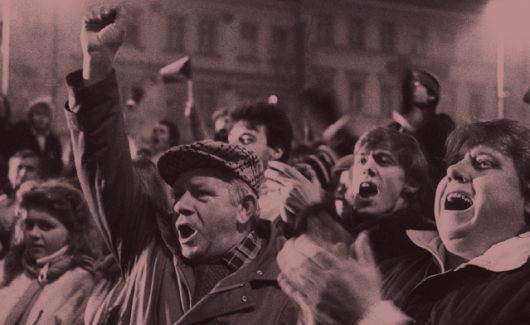
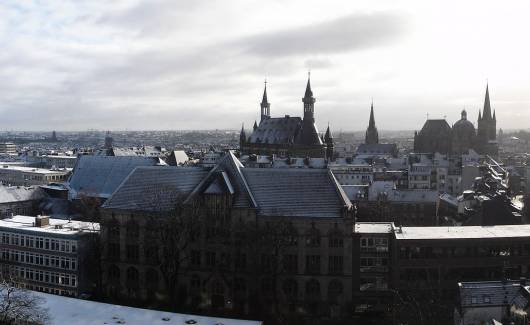
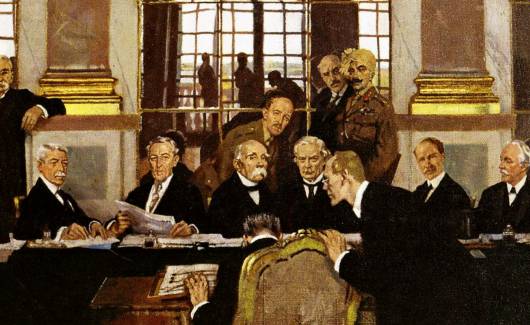
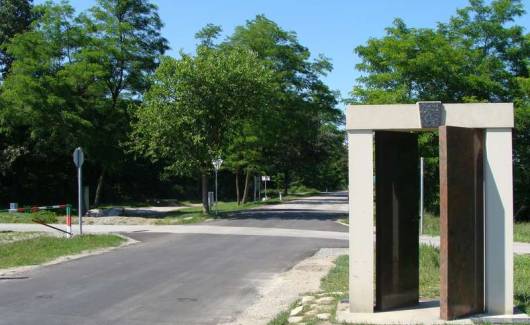

![Photo of the publication European Intellectuals at the Intersection of War, Memory and Social Responsibility [...]](https://enrs.eu/media/cache/thumbnail_530_325/uploads/media/5c59b0c2f04c0-studies-1.png)
